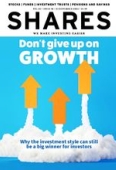Archived article
Please note that tax, investment, pension and ISA rules can change and the information and any views contained in this article may now be inaccurate.
Beware of the trusts bearing big discounts

It is the best of times, and the worst of times for investment trust fans. Discounts are at their widest since the financial crisis, at an average of 16.9%, according to data compiled in early November by the Association of Investment Companies.
That’s not good news for anyone looking to sell out, but on the face of things, it’s manna from heaven for hungry buyers, especially those with a contrarian streak. But caution needs to be exercised when bargain-hunting, as there’s some devil in the detail which means the headline discount for the investment trust sector as a whole isn’t quite as enticing as it seems.
A DIVERSE UNIVERSE
Investment trusts employ a wide range of strategies, and in recent years there’s been a groundswell of trusts offering investors exposure to illiquid assets, such as property, infrastructure, and private equity. The investment trust structure lends itself to holding illiquid assets because the fixed pool of capital means fund managers don’t need to keep looking over their shoulder at flows into and out of the fund, a problem which has plagued open-ended funds plying their trade in these areas, particularly in the property sector.
One of the issues with illiquid assets though is they are not priced as regularly, and their value is more subject to interpretation. Consider for example putting a price tag on the Shard tower in London, compared to shares in Vodafone (VOD), which are traded on the London Stock Exchange thousands of times a day. The result of ambiguities in pricing is that trusts containing illiquid assets
can trade at substantial discounts if the market believes the value of those assets is going to be written down, normally because of unfavourable market conditions.
An example is Hipgnosis (SONG), the song royalties trust, trading on a discount of around 50%, which partly reflects the market’s dim view of the income stream produced by its streaming rights now interest rates have risen so substantially.
The following table shows the highest discounts in the investment trust universe occur in these illiquid asset sectors, and a common theme is the market adjusting pricing to account for the negative effect of interest rate rises on the value of the underlying assets. The proliferation of trust launches in these sectors in the last 15 years goes a long way to explaining why the average discounts is at its highest since 2008, when it looked like the bottom might fall out of capital markets.
A BROADER ISSUE
These illiquid assets aren’t just found in specialist vehicles either, some more generalist trusts also have exposure. Scottish Mortgage (SMT), for instance, is well-known for investing a portion of its portfolio in unquoted companies, and its current discount of 14% suggests some anxiety in the market about the valuation of those assets. So, if you see a big discount, before diving in just consider what’s in the underlying portfolio, and whether there are any fewer liquid assets which might explain the trust’s pricing.
Looking more broadly across the investment trust universe, discounts are certainly very widespread. When considering discounts, and premiums, investors do need to set them in some historical performance context though. A trust trading at a 3% discount when it normally trades at a 6% discount isn’t currently offering compelling value.
TAKE A LOOK AT HISTORY
So, it’s a good idea to take a look at how the discount, or premium, has fared over a period of time, to get an idea of whether it’s trading at an attractive entry point or not. When compared with the last five years, discounts are definitely wide right now across many sectors, but probably aren’t the screaming bargain you might expect when you hear that the average discount is at its highest level since the financial crisis.
Investors to also need to ensure they don’t lose sight of the wood for the trees when selecting investment trusts. You shouldn’t be tempted into an asset class, sector or trust simply because of a discount, if it doesn’t fit in with the rest of your portfolio or sits outside your risk tolerance. Ultimately it’s the underlying assets within a trust which should do the heavy lifting in terms of generating long-term returns for investors, and picking up trusts at a healthy discount is just the icing on the cake.
Important information:
These articles are provided by Shares magazine which is published by AJ Bell Media, a part of AJ Bell. Shares is not written by AJ Bell.
Shares is provided for your general information and use and is not a personal recommendation to invest. It is not intended to be relied upon by you in making or not making any investment decisions. The investments referred to in these articles will not be suitable for all investors. If in doubt please seek appropriate independent financial advice.
Investors acting on the information in these articles do so at their own risk and AJ Bell Media and its staff do not accept liability for losses suffered by investors as a result of their investment decisions.
Issue contents
Danni Hewson
Editor's View
Feature
Great Ideas
Investment Trusts
News
- NatWest retail share offer and booze duty freeze catch market attention in Autumn Statement
- Nvidia blows the lights out, but China clampdown causes concerns
- UK takeover focus turns to consumer-facing stocks
- Uber shrugs off doubts about profitability after rise in third quarter revenue
- Burberry shares suffer biggest one-day fall in over a decade
- AI-powered growth has seen Crowdstrike stock double

 magazine
magazine








